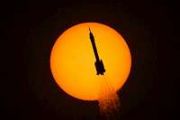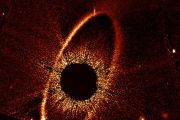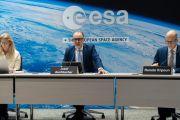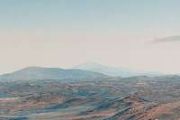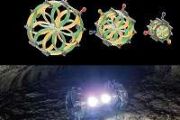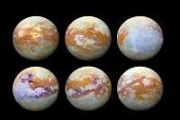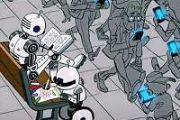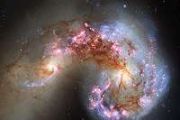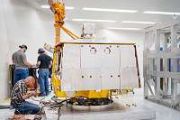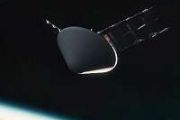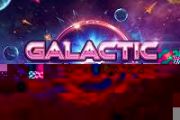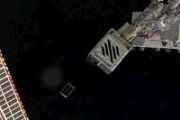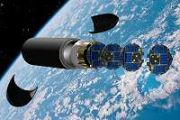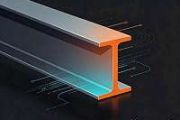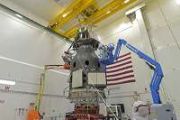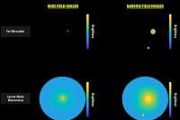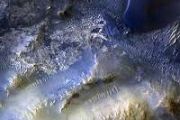
Copernical Team
Gilat Secures Over 5 Million in Contracts for Defense Connectivity
 Gilat Satellite Networks Ltd. (NASDAQ, TASE: GILT), a global leader in satellite networking technology and solutions, has announced that its US-based subsidiary, Gilat DataPath, has secured contracts exceeding $5 million. These agreements, awarded by the US Department of Defense (DoD) and other international Defense Forces, involve providing DKET terminals and Field Service Representative (FSR)
Gilat Satellite Networks Ltd. (NASDAQ, TASE: GILT), a global leader in satellite networking technology and solutions, has announced that its US-based subsidiary, Gilat DataPath, has secured contracts exceeding $5 million. These agreements, awarded by the US Department of Defense (DoD) and other international Defense Forces, involve providing DKET terminals and Field Service Representative (FSR) Surrey Satellite Opens Advanced Imaging R&D Cleanroom
 Surrey Satellite Technology Ltd (SSTL) has officially opened its advanced Research and Development Imaging Cleanroom at its Guildford headquarters. This new facility is designed to strengthen the company's expertise in optical imaging-a key technology for its Earth observation satellite missions.
The cleanroom, now fully operational, houses SSTL's Optical Payloads Team and was developed wi
Surrey Satellite Technology Ltd (SSTL) has officially opened its advanced Research and Development Imaging Cleanroom at its Guildford headquarters. This new facility is designed to strengthen the company's expertise in optical imaging-a key technology for its Earth observation satellite missions.
The cleanroom, now fully operational, houses SSTL's Optical Payloads Team and was developed wi NASA rockets to fly through flickering, vanishing auroras
 Two NASA rocket missions are taking to the Alaskan skies in hopes of discovering why some auroras flicker, others pulsate, and still others are riddled with holes. Understanding these peculiar features is part of NASA's goal to understand the space environment around our planet, which can affect both spacecraft and astronauts. The launch window for the missions - which will fly out of the Poker
Two NASA rocket missions are taking to the Alaskan skies in hopes of discovering why some auroras flicker, others pulsate, and still others are riddled with holes. Understanding these peculiar features is part of NASA's goal to understand the space environment around our planet, which can affect both spacecraft and astronauts. The launch window for the missions - which will fly out of the Poker Exploring ethical dimensions of aware AI in Uppsala
 Artificially intelligent systems are increasingly prevalent in our daily lives, from automated vehicles to delivery robots and virtual assistants. As research shifts towards developing systems with artificial awareness, critical ethical questions arise: What responsibilities come with these advancements? How can benefits and challenges be balanced among developers, policymakers, and end-users? A
Artificially intelligent systems are increasingly prevalent in our daily lives, from automated vehicles to delivery robots and virtual assistants. As research shifts towards developing systems with artificial awareness, critical ethical questions arise: What responsibilities come with these advancements? How can benefits and challenges be balanced among developers, policymakers, and end-users? A NASA Opens New Challenge to Inspire Climate Solutions
 NASA has launched the Sustainable Business Model Challenge to encourage entrepreneurs, startups, and researchers to use the agency's Earth system science data in developing innovative commercial solutions to address climate challenges. This initiative aims to connect vast NASA climate data resources with actionable business models to support climate resilience and informed decision-making.
NASA has launched the Sustainable Business Model Challenge to encourage entrepreneurs, startups, and researchers to use the agency's Earth system science data in developing innovative commercial solutions to address climate challenges. This initiative aims to connect vast NASA climate data resources with actionable business models to support climate resilience and informed decision-making. Emory researchers explore heart cell growth in space to advance treatments on Earth
 A research team led by Chunhui Xu from Emory University has demonstrated that heart muscle cells can survive and grow in the microgravity environment of space. Published in Biomaterials, the findings suggest new avenues for creating more resilient heart cells that could enhance cell therapy-a technique that involves transplanting millions of heart cells to repair damaged cardiac tissue.
"T
A research team led by Chunhui Xu from Emory University has demonstrated that heart muscle cells can survive and grow in the microgravity environment of space. Published in Biomaterials, the findings suggest new avenues for creating more resilient heart cells that could enhance cell therapy-a technique that involves transplanting millions of heart cells to repair damaged cardiac tissue.
"T Astronomers thought they understood fast radio bursts. A recent one calls that into question
 Astronomer Calvin Leung was excited last summer to crunch data from a newly commissioned radio telescope to precisely pinpoint the origin of repeated bursts of intense radio waves - so-called fast radio bursts (FRBs) - emanating from somewhere in the northern constellation Ursa Minor.
Leung, a Miller Postdoctoral Fellowship recipient at the University of California, Berkeley, hopes eventua
Astronomer Calvin Leung was excited last summer to crunch data from a newly commissioned radio telescope to precisely pinpoint the origin of repeated bursts of intense radio waves - so-called fast radio bursts (FRBs) - emanating from somewhere in the northern constellation Ursa Minor.
Leung, a Miller Postdoctoral Fellowship recipient at the University of California, Berkeley, hopes eventua Finland signs on to Artemis Accords
 Finland became the 53rd nation to join NASA's Artemis Accords on Tuesday as the space agency continued to build global support for responsible manned exploration of the moon.
The signing happened during the Winter Satellite Workshop in Espoo, Finland. The country's Economic Affairs Minister Wille Rydman said Finland has participated and has had a long interest in space exploration and l
Finland became the 53rd nation to join NASA's Artemis Accords on Tuesday as the space agency continued to build global support for responsible manned exploration of the moon.
The signing happened during the Winter Satellite Workshop in Espoo, Finland. The country's Economic Affairs Minister Wille Rydman said Finland has participated and has had a long interest in space exploration and l Researchers create AI tool for realistic satellite images of climate impacts
 Researchers from the University of Granada (UGR) have unveiled a major advancement in using artificial intelligence to generate realistic satellite images depicting the impacts of climate change. This innovation holds promise for better communicating the consequences of environmental shifts, such as flooding and reforestation, to policymakers and the public.
The project, spearheaded by Nat
Researchers from the University of Granada (UGR) have unveiled a major advancement in using artificial intelligence to generate realistic satellite images depicting the impacts of climate change. This innovation holds promise for better communicating the consequences of environmental shifts, such as flooding and reforestation, to policymakers and the public.
The project, spearheaded by Nat ORBIMARS: A proposed terminology for Mars orbital operations
 In the evolving lexicon of space exploration, the term "cislunar" has become fundamental to describing Earth-Moon operations, encompassing everything from satellite deployments to lunar gateway missions.
As humanity extends its reach to Mars, we face a compelling need to define and characterize the complex orbital environment of our neighboring planet.
The introduction of ORBIMARS re
In the evolving lexicon of space exploration, the term "cislunar" has become fundamental to describing Earth-Moon operations, encompassing everything from satellite deployments to lunar gateway missions.
As humanity extends its reach to Mars, we face a compelling need to define and characterize the complex orbital environment of our neighboring planet.
The introduction of ORBIMARS re 
